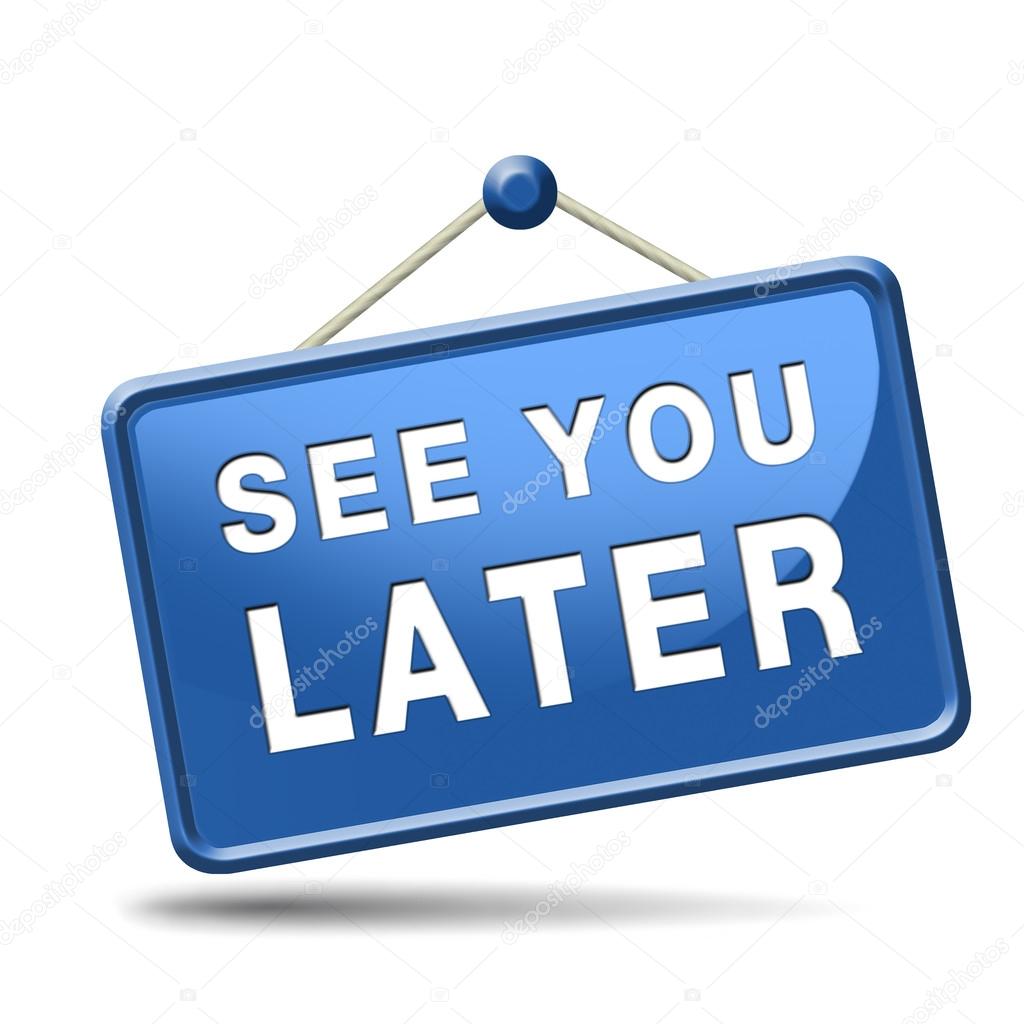
You can say it to your boss at the office or your overly polite aunt at a family dinner. The good news is that you can never go wrong when using this word to say goodbye, especially in formal situations. This is a neutral way to end a conversation, a phone call, or when you’re exiting a place. The most common way to say goodbye in English is simply “ goodbye” (pronounced: gud-bai). Firstly, how do you actually say “goodbye” and “bye” in English?
#See you later how to
To help you avoid awkward situations, we’ve prepared this list of 80+ ways to say goodbye and additional ways to say goodbye without actually saying goodbye (in case you need a sneaky exit strategy).Īnd if you want to master how to say goodbye in over 100 different languages, we've got a blog for that too, of course. You don't want to offend someone by being informal when you should be formal or visa-versa. While there are many creative and funny ways to say goodbye in English, it's important to know the right one to use in different situations and contexts. Just like hello in English, saying goodbye is a very important part of communication, and there are many different ways to say it. One expression may be reserved for family and close friends, while another could be used with someone you met only once or twice. It's not just a matter of polite manners, but rather a matter of language culture. But have you ever stopped to think about why it’s important to learn different ways to say goodbye in English? = See you next week.Saying “hi” and “goodbye” is the first thing you learn when studying any foreign language. Here are some related expressions that can often be used when you want to say “See you later” in Korean, including “See you soon”, “See you tomorrow”, and “See you next week”. So, 언제 한 번 봐요 roughly translates as ‘Let’s see/meet sometime’ and can be used when you want to say ‘See you later’ in Koraen. 언제 한 번 봐요 is made up of the words 언제, which in this context means ‘sometime’, 한 번, which means ‘one time’, and the verb 보다 (to see) conjugated into the polite present tense. This expression can be used when you want to say ‘see you later’ and you will see the person again in a short time. So, 조만간 봐요 is similar to ‘See you soon’ or ‘See you in a bit’. 조만간 봐요 is made up of the words 조만간, which means ‘before long’ or ‘soon’, and the verb 보다 (to see) conjugated into the polite present tense.


Listen to the audio above to check how to pronounce this expression. 또 봐요 is made up of the words 또, which means ‘again’, and the verb 보다 (to see) conjugated into the polite present tense. So, 다음에 봐요 is similar to ‘See you next time’ and can be used when you want to say “See you later” in Korean. 다음에 봐요 is made up of the words 다음, which means ‘next’, the location marking particle 에, and the verb 보다 (to see) conjugated into the polite present tense.

The next way to say “See you later” in Korean is 다음에 봐요. As this is the polite way to say “See you later” in Korean, you can safely use most situations and you will sound polite. 나중에 봐요 is made up of the words 나중에, which means ‘later’, and 봐요, which is the verb 보다 (to see) conjugated into the polite present tense. The most common way to say “See you later” in Korean is 나중에 봐요. Now, let’s look at how to say “See you later” in Korean.

Instead, Korean uses the present tense and when saying “See you later” in Korean it sounds more like a suggestion. In English, ‘See you later’ is actually the short form of ‘ I will see you later.” However, in Korean when saying “See you later” it doesn’t use this future tense form. Before we look at these five ways to say “See you later” in Korean, an important thing to note is that the way to say this in Korean is a little different to how you would say it in English.


 0 kommentar(er)
0 kommentar(er)
